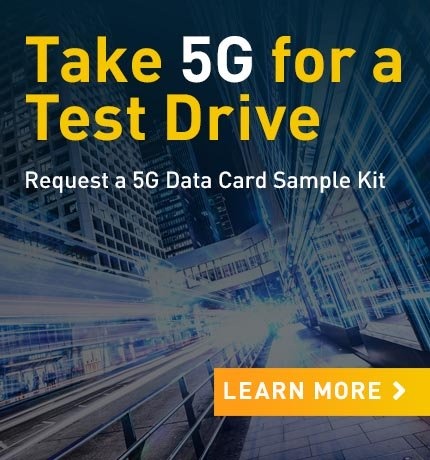5G Represents a New Frontier for Network Latency and Reliability

Most of what you hear about 5G is how it promises to bring higher speeds that allow consumers to download their favorite videos or update their apps more quickly. Of course, if 5G can bring faster speeds to consumers, that’s a great thing. However, something that occasionally gets lost in the hype is the low latency expected from 5G networks.
Why Is Low Latency Important for 5G?
Latency is simply another word for network communication delays — the time it takes to receive a response after the information is sent over a network. 5G promises to kill the lag time you might experience while playing a video game or when holding a video conference call on your phone.
A lower latency will allow 5G to deliver mobile networks that will let consumers do entirely new things beyond improving what we are used to doing now.
“The possibilities include multiplayer mobile gaming, factory robots, self-driving cars and other tasks demanding quick response — all areas where today’s 4G networks struggle or can’t manage at all,” writes Steven Shankland of CNET.
The hype is certainly out there, and we won’t know what will happen in the United States for at least a couple of years before low-latency 5G service is set to roll out.
What Will Change?
Low latency will have significant effects in all industries that require or make heavy use of network connectivity in tight control loops. Factory automation will profoundly improve with low latency technology, as well as the many appliances, gadgets and components that use sensors and network connections in live human communications, control systems, augmented and virtual reality, telepresence, and others. IoT will develop rapidly everywhere, and companies like Telit will be there to help companies and other organizations develop complicated IoT solutions.
Real-Time Applications with 5G’s Low Latency

A lot is going to change — from gaming to telehealth solutions to real-time applications that control things like drones and other robots through a network connection.
CNET noted that AT&T Chief Technology Officer, Andre Fuetsch, “sees 5G connecting robots so they can coordinate their actions and avoid running into each other. 5G also could let robots communicate wirelessly instead of with network cables, untethering them so a factory can rapidly switch manufacturing jobs.”
Self-driving cars are one example of how vital 5G’s low latency will be. The autonomous driving car is the most representative influencer in the development of the low-latency standard for 5G. “When it comes to connected driving, data must be transmitted and a reaction triggered in real time, because decisions have to be made in fractions of a second. Only in this way can the car stop before hitting an obstacle or take evasive action,” notes German company, Deutsche Telekom.
During the current COVID-19 crisis, the importance of low latency, particularly in telepresence systems helping health care front-liners, became more apparent than ever. First responders need to communicate and send vitals to the ER without lag over the first responder network.
Low latency allows for seamless first responder communications since human conversation becomes unnatural and broken as lag time exceeds about six milliseconds. With social distancing and quarantine measures in place, telehealth has gained much traction. For telehealth to be completely effective, doctors must be able to diagnose, treat and monitor their patients remotely in real time to give patients the best chance at full recovery and save countless lives.
5G’s Low Latency Enables Health Care and Telehealth
The Center for Connected Health Policy states that telehealth is “a collection of means or methods for enhancing health care, public health, and health education delivery and support using telecommunications technologies. Telehealth encompasses a broad variety of technologies and tactics to deliver virtual medical, health, and education services.”
The technology is used to support patients with chronic conditions that might inhibit their ability to travel to an outpatient center or another health facility. This form of “health IT communication” has other benefits:
- A privately secured cloud can store medical data.
- Patients can be empowered to manage and understand long-term health conditions.
- Doctors and other health professionals can track patient health statuses and promptly intervene when observing negative trends or abnormal measurements.
Placing all of this on a network means that health considerations must now involve bandwidth, network accessibility and digital disaster recovery. With the advent of 5G, many of these things will become faster, and 5G’s low-latency, ultrareliable technology might mean the difference between life and death for patients with chronic health issues.
5G IoT Solutions

As 5G technology rolls out, companies and organizations will require new IoT solutions. We bring a lot to the table.
We offer the broadest portfolio of IoT modules on the market. Our modules are designed and tested to the highest standards and use a family form factor based on our “design once, use everywhere” approach. With our modules, your IoT devices can adapt with ease across multiple technologies and markets around the world.
We also provide IoT SIM cards and data plans that meet requirements for your use case and bandwidth, with connectivity solutions for smart utilities, health care, retail and more.
Telit takes the complexity out of connecting “things to apps” with our IoT platforms, which collect, manage and analyze device data critical to your deployment.
We accelerate the digital business transformation ecosystem with the industry’s most accomplished solutions for The First Mile of IoT™. Speak with our 5G IoT experts to get started on your solution.
Request a Sample Kit
